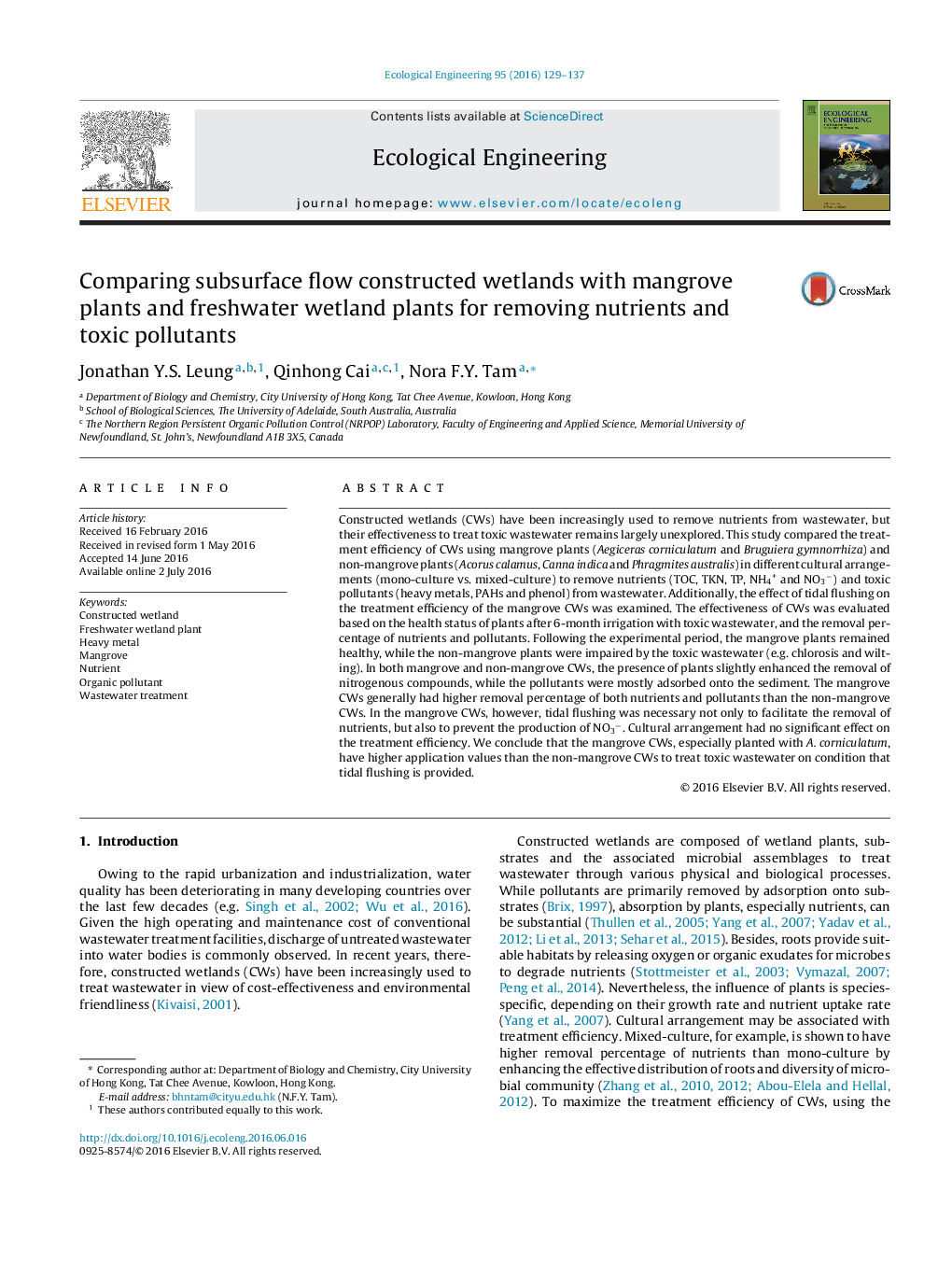| Article ID | Journal | Published Year | Pages | File Type |
|---|---|---|---|---|
| 4388436 | Ecological Engineering | 2016 | 9 Pages |
Constructed wetlands (CWs) have been increasingly used to remove nutrients from wastewater, but their effectiveness to treat toxic wastewater remains largely unexplored. This study compared the treatment efficiency of CWs using mangrove plants (Aegiceras corniculatum and Bruguiera gymnorrhiza) and non-mangrove plants (Acorus calamus, Canna indica and Phragmites australis) in different cultural arrangements (mono-culture vs. mixed-culture) to remove nutrients (TOC, TKN, TP, NH4+ and NO3−) and toxic pollutants (heavy metals, PAHs and phenol) from wastewater. Additionally, the effect of tidal flushing on the treatment efficiency of the mangrove CWs was examined. The effectiveness of CWs was evaluated based on the health status of plants after 6-month irrigation with toxic wastewater, and the removal percentage of nutrients and pollutants. Following the experimental period, the mangrove plants remained healthy, while the non-mangrove plants were impaired by the toxic wastewater (e.g. chlorosis and wilting). In both mangrove and non-mangrove CWs, the presence of plants slightly enhanced the removal of nitrogenous compounds, while the pollutants were mostly adsorbed onto the sediment. The mangrove CWs generally had higher removal percentage of both nutrients and pollutants than the non-mangrove CWs. In the mangrove CWs, however, tidal flushing was necessary not only to facilitate the removal of nutrients, but also to prevent the production of NO3−. Cultural arrangement had no significant effect on the treatment efficiency. We conclude that the mangrove CWs, especially planted with A. corniculatum, have higher application values than the non-mangrove CWs to treat toxic wastewater on condition that tidal flushing is provided.
